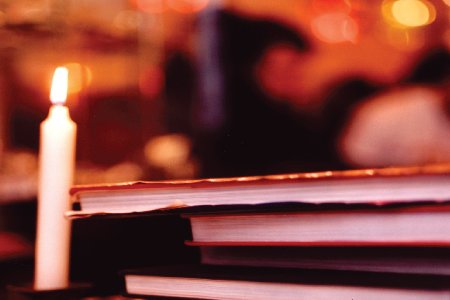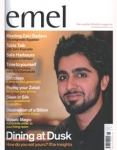
Inspired by Islam
Issue 2 Nov / Dec 2003
The 'warraqeen' produced work at such a scale that now they are often referred to as human photo copy machines
The art of paper making was acquired from the Chinese, and was quickly absorbed into Baghdad in the Eight century, resulting in mass production. Muslims introduced innovated ways into the paper making process, making books easily accessible and affordable. It was five centuries later in the mid-thirteenth century that paper became common in Europe.
Multiple copies of the same volume were available owing to the work of the ‘warraqeen’, or ‘those who handle paper’. These skilled individuals produced work at such a scale that now they are often referred to as human photocopy machines. They could copy a book, two or three hundred pages in length, in a matter of hours while larger documents took some days. The bookshops of the warraqeen could be found in Damascus, Baghdad, Fez and other major Islamic cities. The larger bookshops provided an attractive meeting place for scholars who would travel from distant places to meet together and discuss their knowledge over a strong coffee.
The publication of books was also an enterprise the warraqeen undertook. They would transcribe public dictations by authors who wished to publish their work, which usually took place in the mosque or a bookshop, which could be attended by anyone who might be interested. If they were hooked on the subject matter, they would end up listening to these daily instalments for up to several months, after which the author’s book would be proof read, copied and made available to the public.
The overwhelming demand for books led to the development of private and public libraries, housing some tens of thousands of books, the most famous library being ‘Dar al- Hikma’ (House of Wisdom), built by Mamun al-Rashid in the early ninth century. The non- Muslim counterparts to such fountains of knowledge were the monastery libraries. Even the largest monasteries would harbour around 500 books, which were securely placed away under lock and key from public use, contrasting with the large public libraries of Baghdad and Cordoba that over 250,000 books. Even private libraries had extensive collections of books: one scholar had to refuse a job away from Baghdad, because it would have taken 400 camels to shift all of them.
The germs that brought about the decay of the golden age of Islam were, in part, attributed to the destruction of these great hallmarks of learning that had grown so meticulously over the centuries. The 12th and 13th centuries ushered in the destruction of libraries through the Islamic world. The crusaders had ransacked the lands of Syria and Palestine, and in 1258 the Mongols swept through Baghdad, razing libraries to the ground. Before the Mongol invasion, there were 36 public libraries in Baghdad, rendering the loss even more great.
The Islamic legacy of ‘the book’ has had a perpetual effect on the entire world and has become a powerful tool for furthering the education of the mind. The lessons of history remind Muslims that once they were the dynamic engines of seeking knowledge, yet that pursuit is far from over, as it must be revived and the challenge met.
Bookmark this |
|
Add to DIGG |
|
Add to del.icio.us |
|
Stumble this |
|
Share on Facebook |
|
Share this |
|
Send to a Friend |
|
Link to this |
|
Printer Friendly |
|
Print in plain text |
|


Comments
0 Comments